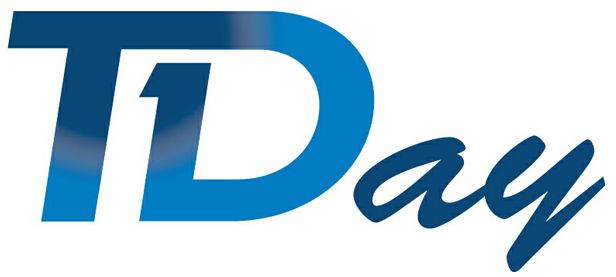As we mentioned in our blog about the “Calling All Types” campaign last week, November is American Diabetes Month. Today, November 1st, is also “T1 Day,” a new event sponsored by the Juvenile Diabetes Research Foundation (JDRF) to raise awareness about type 1 diabetes (previously known as juvenile diabetes), which is often diagnosed in children, teenagers and young adults but may occur at any age.
Affecting 5% of those with diabetes, type 1 diabetes occurs when the pancreas does not produce any insulin, a hormone that is needed to convert sugar, starches and other food into energy for the body. As a result, people with type 1 diabetes are “insulin dependent,” meaning they must take insulin in order to stay alive. This requires testing their blood sugar and taking insulin (via injection or an insulin pump) multiple times per day for the rest of their lives.
In contrast, type 2 diabetes patients do produce insulin. The problem is that it’s either in insufficient amounts, or the body doesn’t respond to it as it should. Thus, oral medications, supplemental insulin and/or lifestyle modifications such as diet and exercise may be prescribed to help control blood sugar levels and prevent hyperglycemia (high blood sugar), which is a major cause of serious diabetes complications such as blindness, kidney failure and amputations.
Here at PatientsLikeMe, there are currently 386 patients reporting type 1 diabetes, with 63% female and 37% male. Some of the most commonly reported symptoms include blurry vision, urinary frequency and excessive thirst, while some of the most commonly reported treatments are Insulin Glargine, Insulin Lispro and Insulin Aspart. Collectively, our members have submitted 45 evaluations of these three insulin types, sharing their experiences with dosage, side effects, cost, adherence and more.
Confusion about the differences between type 1 and type 2 diabetes – the latter being far more prevalent as well as strongly linked with the obesity epidemic – is a frustration for some of our type 1 members. As one member writes in our forum:
“As a type 1 diabetic, I am sick of people giving me advice or ‘cures’ that are for type 2. Almost all advertising in Canada is directed towards type 2 diabetics and how the disease is on the increase due to poor eating habits and obesity, weight problems, whatever. So when people hear I am a diabetic, I get: ‘Should you really be eating that dear, diabetics should not eat sugar.’ I look at them and think of the blood test I just did, which let me know that I needed some sugar.”
Indeed, as the JDRF states on its Myths and Misconceptions page, “While obesity has been identified as one of the ‘triggers’ for type 2 diabetes, it has no relation to the cause of type 1 diabetes. Scientists do not yet know exactly what causes type 1 diabetes, but they believe that both genetic and environmental factors are involved. Eating too much sugar is not a factor.” Also, as the patient quote above illustrates, patients with type 1 diabetes must always be on alert for insulin-induced hypoglycemia (low blood sugar), which requires an immediate intake of sugar to avoid fainting and other complications.
For a deeper glimpse into life with type 1 diabetes – which is diagnosed in more than 15,000 children and 15,000 adults each year in the US – tune in to our podcast interview with Sarah Taylor, a registered nurse and friend of the company who was diagnosed with type 1 diabetes at the age of nine.
To learn about other American Diabetes Month events, check out this great preview on the blog Diabetes Mine. And if you’re a diabetes patient, don’t forget to share your thoughts and stories at CallingAllTypes.com.


